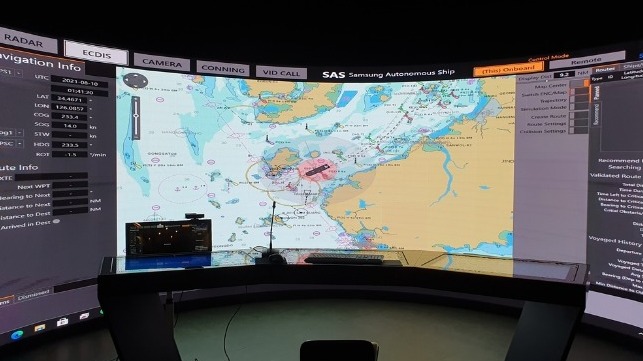SHI Advances Merchant Vessel Autonomy With Collision-Avoidance Test

Samsung Heavy Industries (SHI) has achieved another milestone towards the commercialization of an autonomous ship collision avoidance system following a successful test run in South Korean waters.
The company announced that a 9,200-ton ship and a 300-ton tug installed with a remote autonomous navigation system - branded as Samsung Autonomous Ship (SAS) - successfully avoided each other in a demonstration voyage.
In the demonstration, the SAS system helped the two autonomous ships to detect and avoid each other in seas off the southwestern island of Gageo. The shipbuilding giant said that it was able to show SAS’s capabilities in recognizing surrounding vessels and obstacles while assessing the risk of collision and finding an optimal route.
Samsung Heavy Industries and its partner, Mokpo National Maritime University, believe that the test was the first of its kind involving a large vessel. SHI hopes to begin commercializing the technology next year.
The test run using a large vessel follows a lower-stakes trial in October last year, when a 300-ton tug boat installed with the technology made a successful voyage in seas off Geoje Island, about 250 miles south of Seoul. The test was monitored via a remote control system at a research center in Daejeon, about 150 miles from the test area.
SHI's latest test run is a demonstration of South Korea’s determination to be a global frontrunner in the development of autonomous ships, which could become a new source of high-value-added sales for the nation's busy shipbuilders. South Korea initiated a government-led autonomous surface ship project last year and has committed to invest $140 million to develop the autonomous shipping market.
Business intelligence firm Allied Market Research predicts that the autonomous shipping market will accelerate in the Asia-Pacific region, specifically South Korea, Japan and China, where there is a the high concentration of vessel ownership and research activity.
As maritime trade routes become more congested, the risk of collision remains significant. Traditionally, the industry has relied on IMO’s Convention on the International Regulations for Preventing Collisions at Sea (COLREGS), adopted back in 1972. The regulation establishes specific navigation rules for vessels, including clear identification of the give-way vessel in the most common traffic situations. Studies on shipping industry safety show that about 70 percent of maritime accidents are caused by human error, and electronic navigation systems such as SAS offer the opportunity to reduce the frequency of error and enhance compliance with COLREGS. Where regulation allows, autonomous ships may also operate with reduced manning.
